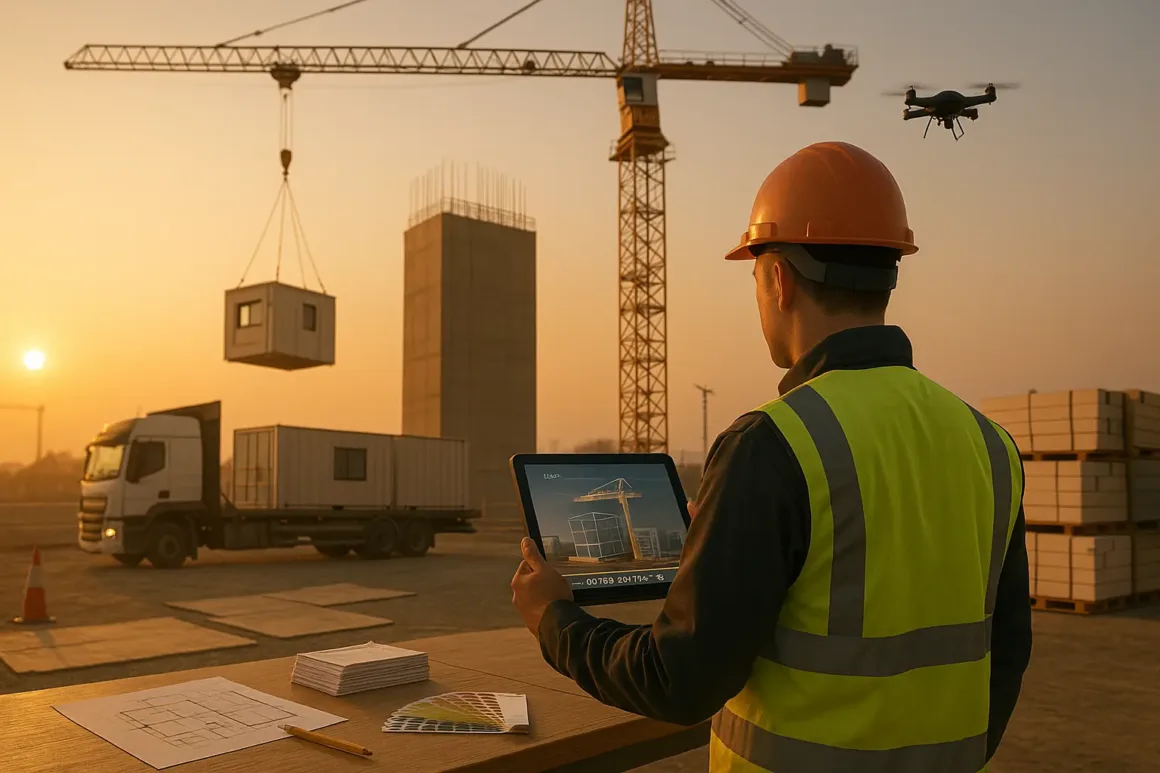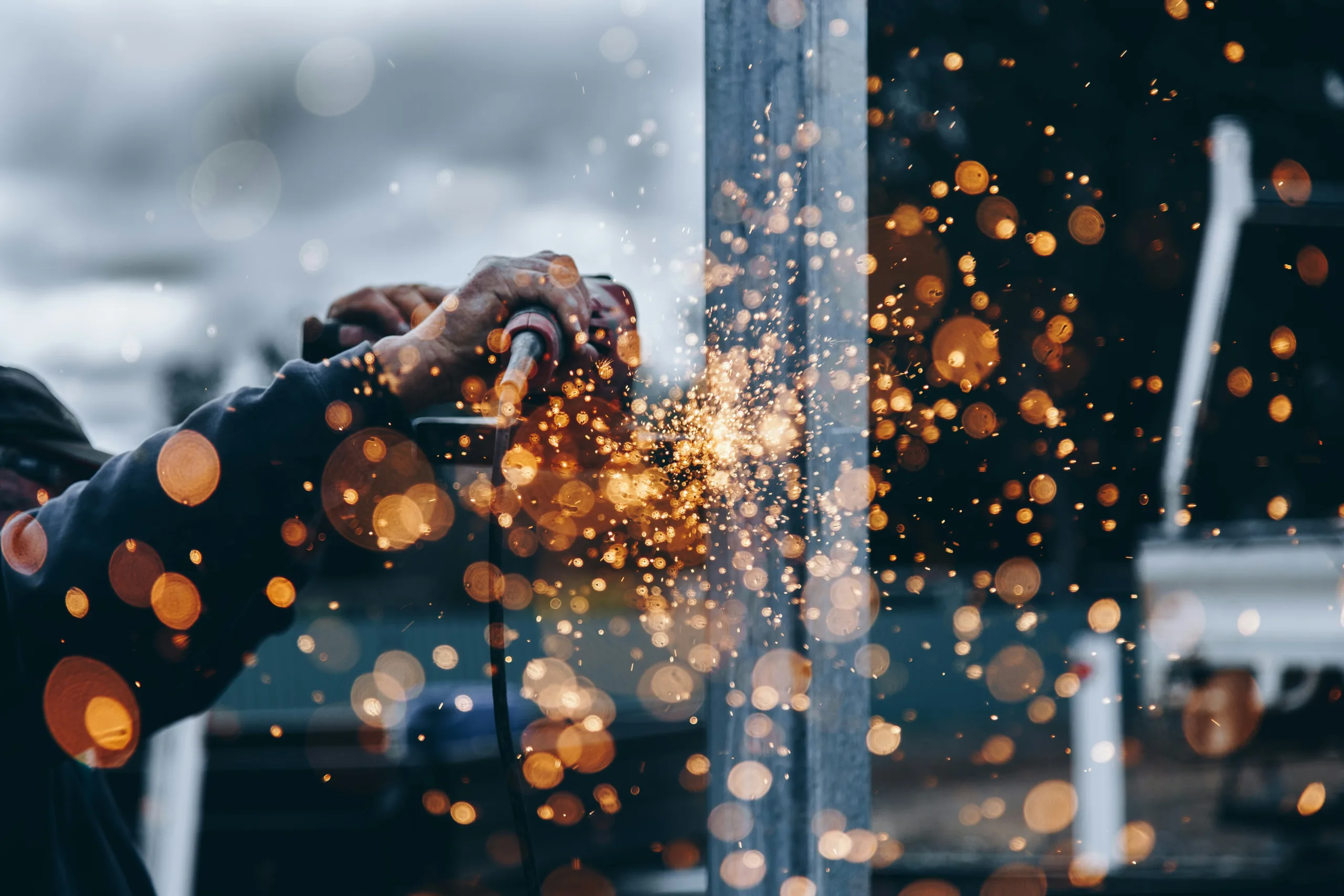Table of Contents Show
The construction industry is evolving fast. Beyond incremental tools, we’re seeing platform-level changes—from AI-assisted scheduling to digital twins that mirror job sites in real time. Below is a practical look at technologies shaping construction in 2025, with examples you can act on today, plus UK-specific guidance where it matters.
Quick wins: adopt 4D/5D BIM for clash-free scheduling and cost control, use drones + LiDAR for rapid reality capture, pilot AR/VR for worker training, and specify low-carbon materials to meet tightening sustainability targets.
1. 3D Printing
3D printing enables fast, repeatable fabrication of formwork, components, and even walls, cutting lead times while allowing complex geometries. It shines in rapid prototyping and short-run bespoke parts that would be costly with traditional methods.
Try this: use printed molds for repeat concrete elements, then standardise finishes and QA in the shop. For inspiration on material versatility, see our guide to creative uses for concrete.
2. Prefabrication and Modular Construction
Prefabrication shifts labour to controlled factory settings, shrinking time on site and improving consistency. Modular building turns projects into configurable kits—streamlining logistics and reducing disruption for neighbours and trades.
Site benefit: fewer deliveries, shorter crane windows, cleaner sequencing for MEP trades, and less rework thanks to repeated assembly processes.
A clear example of how off-site fabrication brings tangible benefits is in modular sanitation: for both short-term sites and longer-term facilities, bespoke units can be delivered rapidly and installed with minimal disruption.
Modern modular toilet blocks and washrooms are engineered to be weather-resistant and customizable, with options such as external cladding, integrated walkways and ramps to meet accessibility requirements.
Because they are factory-built, these units often offer tighter quality control, reduced waste and faster handover compared with traditional builds. That combination of speed, durability and adaptability makes them a practical application of prefabrication for many construction projects.
3. Building Information Modeling (BIM)
BIM is the collaboration backbone. Beyond 3D, most teams now benefit from 4D (time) + 5D (cost) to sequence work, surface clashes early, and control budgets—before boots hit the site. Evidence from multi-project case studies shows BIM can reduce design errors ~50–60%, rework costs ~40–50%, and materially cut time and cost when applied across project phases [1].
4. Drones and Robotics
Drones speed up surveys, progress checks, and volumetrics. Robotics take on repetitive or high-risk tasks (layout, bricklaying, welding), lifting productivity and safety. See our explainer: Robotic Bricklayers and Welders.
On people: augment workers with cobots and better welfare—practical ideas here: Boost Worker Satisfaction on Construction Sites.
5. Augmented Reality (AR) and Virtual Reality (VR)
AR overlays instructions and BIM data onto real-world contexts for install, snagging, and safety. VR enables immersive design reviews and crew training for rare or risky procedures (e.g., bridge works, complex MEP). Studies show VR training improves hazard-identification performance vs. traditional methods [2][3].
- Scenarios to pilot now: (1) VR “first-run” rehearsals before shutdowns; (2) AR installation guidance on congested plant rooms; (3) VR safety modules for high-risk tasks.
- Tooling examples (neutral): CDE + viewer (Navisworks or similar) for federated models; game-engine VR (Unreal/Twinmotion or Unity-based viewers); AR headsets for hands-free overlays.
6. Digital Twins & IoT Sensors
Digital twins mirror assets or sites so teams can test scenarios (access, logistics, energy) before committing in the field. Combined with IoT sensors (vibration, humidity, runtime), they provide live health checks and predictive maintenance—underpinned by the Gemini Principles and UK best-practice guidance [6].
- Where to start: twin the most constrained area (e.g., logistics yard), stream periodic LiDAR/drone updates, and tie alerts to your CDE.
- Common hurdles: data governance, model fidelity, and connecting operational data to decisions—solve with clear information requirements up front (see ISO 19650 notes below).
7. Reality Capture (LiDAR, Photogrammetry)
Quick scans create trustworthy as-built data for clash detection, quantity checks, and claims. Weekly drone flights + ground LiDAR are often enough for most general contractors.
8. Low-Carbon Materials & Methods
Specify low-carbon concrete mixes (SCM blends), mass timber where appropriate, and pervious surfaces to manage water. Capture product data at source so it flows into O&M.
9. Compliance & Information Management (UK)
For higher-risk buildings in England, maintain a digital Golden Thread of information through design, construction, and occupation [7]. Align processes with the ISO 19650 series and the UK BIM Framework so information exchanges are consistent, secure, and auditable [8][9].
Mini Case Snapshots (Evidence-based)
- BIM across phases: studies report ~20% faster timelines and ~15% cost reduction, plus ~50–60% fewer design errors and ~40–50% lower rework cost when BIM is embedded end-to-end [1].
- 5D transparency: industry/peer-reviewed sources note 5D workflows improve cost estimation, decision-making, and stakeholder alignment—reducing budget surprises and supporting just-in-time logistics [4][5].
- VR/AR training: immersive reviews catch operability issues earlier and improve hazard recognition, cutting downstream rework and enhancing safety outcomes [2][3].
Project Starter Checklist
- Adopt 4D/5D BIM for programme + cost control (pick one pilot project)
- Set up a CDE and name a data owner
- Plan weekly drone flights + monthly LiDAR scans
- Pilot AR/VR training on one risky task
- Pick one prefab package to shift off-site
- Define KPI set: rework rate, RFI cycle time, schedule variance, embodied carbon
FAQs
What technology gives the fastest on-site win?
What’s the real difference between BIM and a digital twin?
How do AR/VR help beyond “pretty visuals”?
Where should we start with 5D (cost) if we already use 3D/4D?
Is modular worth it for small projects?
How do we measure success from these technologies?
Who owns the data in our CDE/digital twin?
Do UK “Golden Thread” rules apply to every project?
Are drones legal on construction sites in the UK?
What’s a sensible starter stack?
How do we budget for adoption?
Can we retrofit low-carbon options mid-project?
About the Author
UKHCA Editorial — Construction Technology Desk. We cover practical construction tech—BIM/ISO 19650 workflows, digital twins, prefab, and site robotics—with a focus on real-world adoption. About us • Contact
References
- [1] “The impact of BIM on project time and cost: insights from case studies.” Discover Materials (Springer), 2025 — reports design errors −50–60%, rework −40–50%, clashes −40%; timeline −20%, cost −15% (Table 3). ↩︎ ↩︎
- [2] Guo, X. et al. “Hazard identification performance comparison between VR and traditional construction safety training modes.” Safety Science 180 (2024): 106644. ↩︎ ↩︎
- [3] Shringi, A. et al. “Efficiency of VR-Based Safety Training for Construction.” Buildings (MDPI), 2022. ↩︎ ↩︎
- [4] McKinsey & Company. “Imagining construction’s digital future.” 2016 — 5D/AR decision-making & transparency. ↩︎
- [5] Hosamo, H.H.; Rød, B. “Navigating the Adoption of 5D Building Information Modeling.” Infrastructures (MDPI), 2024 — cost estimation & management impacts; adoption challenges. ↩︎
- [6] CDBB. “The Gemini Principles.” 2018 — foundational principles for trustworthy digital twins. ↩︎
- [7] GOV.UK. “Keeping information about a higher-risk building: the golden thread.” 2024 guidance for HRBs in England. ↩︎
- [8] Construction Leadership Council — Golden Thread Guidance (overview). Full guidance (PDF): download. Summary (PDF): download. ↩︎
- [9] UK BIM Framework. “Information management according to BS EN ISO 19650 – Guidance Part 2 (Third Edition).” 2020. ↩︎



